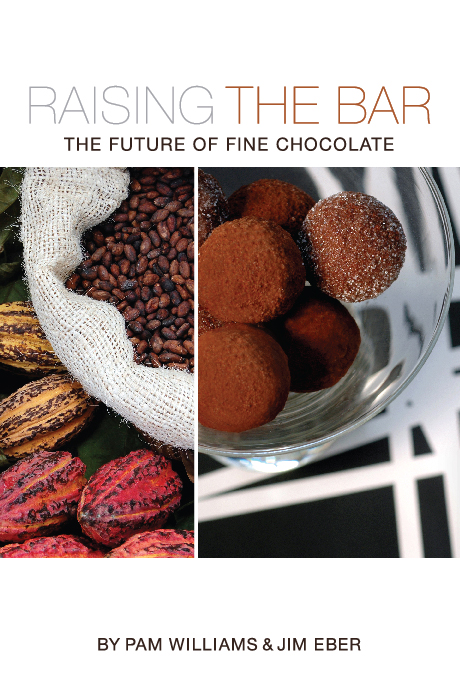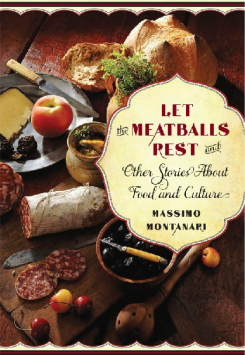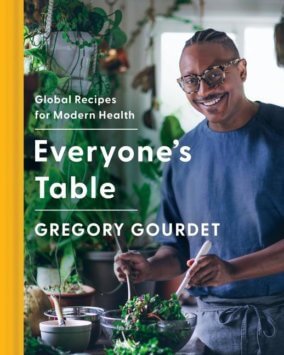Raising the BarThe Future of Fine Chocolate
In the spirit of Michael Pollan’s The Omnivore’s Dilemma, Raising the Bar: The Future of Fine Chocolate tells the story of what that next movement in the fine flavor chocolate symphony might hold.
“Just give me all your chocolate and no one gets hurt!”
Billions of us worldwide understand what it means to scream those words. We feel lost—even unhinged—without chocolate’s pleasures. And if chocolate is the music that makes our days brighter, fine chocolate is the symphony—the richest, most complex form in the chocolate universe. The most important movement in that symphony’s centuries-old existence is now beginning. And that future is . . . what? A world of gray monochromatic flavor, or one rich with a rainbow of flavors that capture the myriad pleasures and diversity of the cocoa bean?
In the spirit of Michael Pollan’s The Omnivore’s Dilemma, Raising the Bar: The Future of Fine Chocolate tells the story of what that next movement in the fine flavor chocolate symphony might hold. Told in four lively parts covering everything from before the bean to after the bar—genetics, farming, manufacturing, and bonbons—the book features interviews with dozens of international stakeholders across the fine flavor industry to consider the promises and pitfalls ahead. It looks through what is happening today to understand where things are going, while unwrapping the possibilities for the millions and millions of us who believe that life without the very best chocolate is no life at all.
Pam Williams has been involved in the chocolate industry since 1981 when she opened her first chocolate endeavor, the chocolate shop: au Chocolat. In 2003, she founded Ecole Chocolat Professional School of Chocolate Arts which delivers high quality educational programs to students all over the world. Pam received the 2011 Fine Chocolate Industry Association’s Recognition of Excellence in Service to the Industry. | Jim Eber is a veteran writer and collaborator specializing in food and business marketing. He has worked with many companies and publishing houses. Beyond this book, Jim is currently working with the Fine Chocolate Industry Association on the launch of the Heirloom Cacao Preservation Initiative. Much to his wife’s past chagrin—but current delight—this is his first book on chocolate.
Recipes for Success:
Pursuing New Directions and Ingredients
Despite some unconventional examples, most chocolatiers continue to choose more traditional-looking creations to satisfy their personal passions, to pursue a great idea, and to explore the possibilities of taste. And while a shared vision to enchant and educate their customers unites many chocolatiers, the ingredients and textures of their creations are all over those spectra.
And rightly so. Fine flavor chocolatiers worldwide have different types of customers, different palates, and are at different stages in their careers as artists and chefs. There may be similar tastes in every shop, but any idea of there being one future for particular ingredients, flavor combinations, textures, or shapes is rubbish. What is certain is that each chocolatier has a zeal for chocolate—many getting exclusives and custom blends from manufacturers, choosing beans themselves, and touting the beans’ origins on their websites, a trend that is only growing. And they have a shared fanaticism for finding and understanding the ingredients that go into their bonbons.
For some more established chocolatiers, the terroir of their homeland offers only so much, especially when the chocolate comes from places far away. For example, Patrick Roger is happy to snip herbs from his garden but says, “You need to explore and go further afield to find different flavors and not stick with just one for everything you do.” That’s why his pursuit of the best takes him to Corsica for oranges, to Ethiopia for coffee, and to Delhi for lemon. The latter is for a bonbon aptly named Delhi, which features an essence of basil and lemon in its almost caramel-like ganache and was the other bonbon Patrick pointed to when asked to talk about the future.
In Turin, Italy, Guido Gobino also believes the “best ingredients are found in places that are far from home,” and he loves to find them and then combine them with his chocolate recipes for flavor and originality. His creative process makes him sound more like a marketing scientist than an artist or chef, but that is what it takes to achieve the best result: “After putting the new prescription to the tasting panel and various laboratory tests, I check the product’s characteristics and decide whether to proceed with production.”
What Guido describes is as true in Costa Rica and China, where there are few competitors, as it is in Paris and Brussels, where there are thousands. Despite varied business models and experience, fine flavor chocolatiers have the same attitudes toward creativity but work within clearly defined limits of personal preference and the bonbon itself. They take deep pride in what they make, and they want to share the story and process behind it, which is why almost every chocolatier wants you to taste while you talk to them. There’s no better, or more delicious, way to understand where they are coming from and where they are going.
For example, George Soriano and Julio Fernandez of Sibú Chocolate in Costa Rica chose a dark milk chocolate bar flavored with coffee and cardamom and a dark chocolate-coated caramel infused with fresh ginger and coconut as their examples of where they are now and where they are going. The former reflects George and Julio’s heritage (both are half Middle Eastern and like cardamom in their coffee) and the latter their country’s culture of taste. “We call it the Costa Rican because it puts together all of the flavors that make up Costa Rican culture,” says George. “Caramel based on sugar brought by the Spanish, ginger introduced by Chinese immigrants who came to build the railroad, and coconut milk from Afro-Caribbean cuisine, as many of the people on the coast are immigrants from Jamaica. Then it’s covered in a dark chocolate shell with the cacao that comes from the indigenous pre-Colombian tradition in Costa Rica. The way that the flavors play together creates something new.”
Of course, as George and Julio noted before, things move slower in Costa Rica, so a caramel, no matter how fresh, is hardly going to be the bonbon of the future most chocolatiers in the rest of the fine flavor world point to . . . or is it?







Leave a Reply